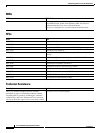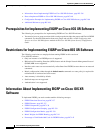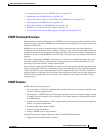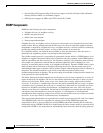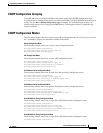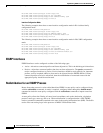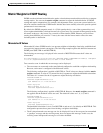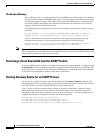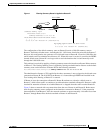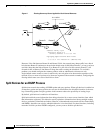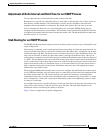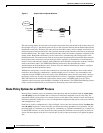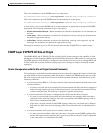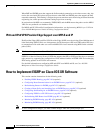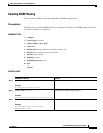
Implementing EIGRP on Cisco IOS XR Software
Information About Implementing EIGRP on Cisco IOS XR Software
RC-142
Cisco IOS XR Routing Configuration Guide
OL-14356-01
The Goodbye Message
The goodbye message is a feature designed to improve EIGRP network convergence. The goodbye
message is broadcast when an EIGRP routing process is shut down to inform adjacent peers about
the impending topology change. This feature allows supporting EIGRP peers to synchronize and
recalculate neighbor relationships more efficiently than would occur if the peers discovered the
topology change after the hold timer expired.
The following message is displayed by routers that run a supported release when a goodbye message
is received:
RP/0/RP0/CPU0:Mar 13 09:13:17:eigrp[163]:%ROUTING-EIGRP-5-NBRCHANGE: IP-EIGRP(0) 1:
Neighbor 10.0.0.20 (GigabitEthernet0/6/0/0) is down: Interface Goodbye received
A Cisco router that runs a software release that does not support the goodbye message can
misinterpret the message as a K-value mismatch and display the following message:
RP/0/RP0/CPU0:Mar 13 09:13:17:eigrp[163]:%ROUTING-EIGRP-5-NBRCHANGE: IP-EIGRP(0) 1:
Neighbor 10.0.0.20 (GigabitEthernet0/6/0/0) is down: K-value mismatch
Note The receipt of a goodbye message by a non supporting peer does not disrupt normal network operation.
The non supporting peer terminates the session when the hold timer expires. The sending and receiving
routers reconverge normally after the sender reloads.
Percentage of Link Bandwidth Used for EIGRP Packets
By default, EIGRP packets consume a maximum of 50 percent of the link bandwidth, as configured with
the bandwidth interface configuration command. You might want to change that value if a different level
of link utilization is required or if the configured bandwidth does not match the actual link bandwidth
(it may have been configured to influence route metric calculations).
Floating Summary Routes for an EIGRP Process
You can also use a floating summary route when configuring the summary-address command. The
floating summary route is created by applying a default route and administrative distance at the interface
level. The following scenario illustrates the behavior of this enhancement.
Figure 1 shows a network with three routers, Router-A, Router-B, and Router-C. Router-A learns a
default route from elsewhere in the network and then advertises this route to Router-B. Router-B is
configured so that only a default summary route is advertised to Router-C. The default summary route
is applied to interface 0/1 on Router-B with the following configuration:
RP/0/RP0/CPU0:router(config)# router eigrp 100
RP/0/RP0/CPU0:router(config-eigrp)# address-family ipv4
RP/0/RP0/CPU0:router(config-eigrp-af)# interface POS0/3/0/0
RP/0/RP0/CPU0:router(config-eigrp-af-if)# summary-address 100.0.0.0 0.0.0.0



